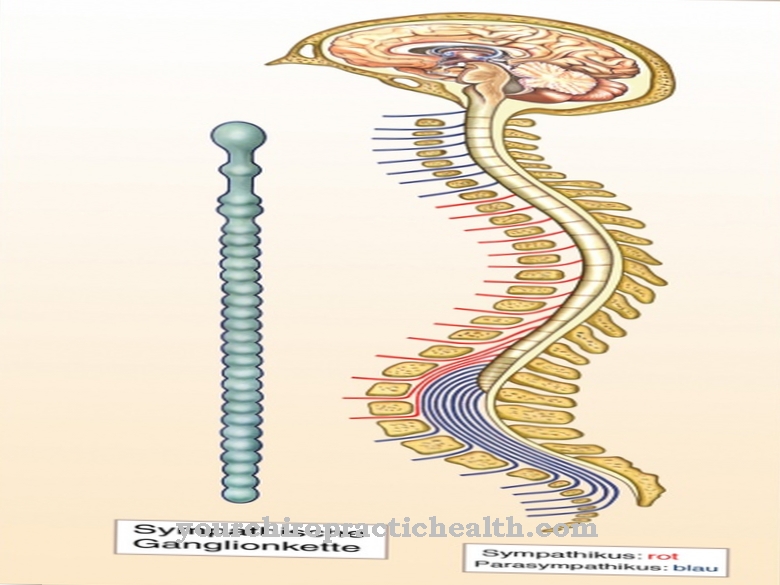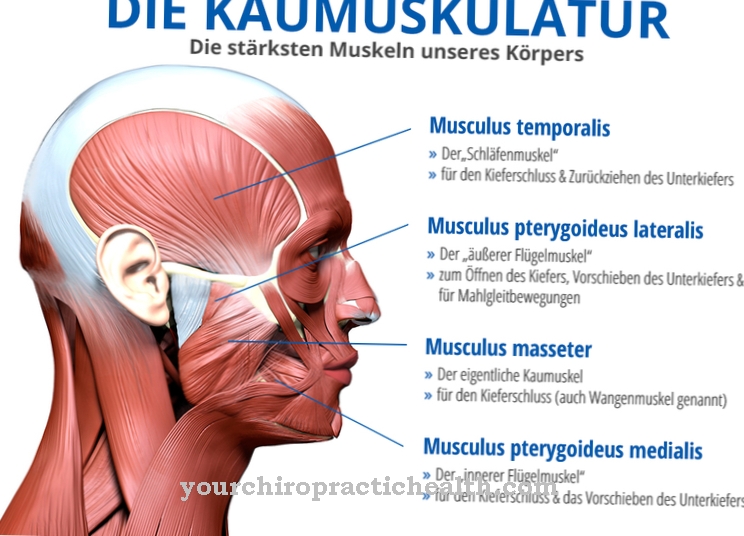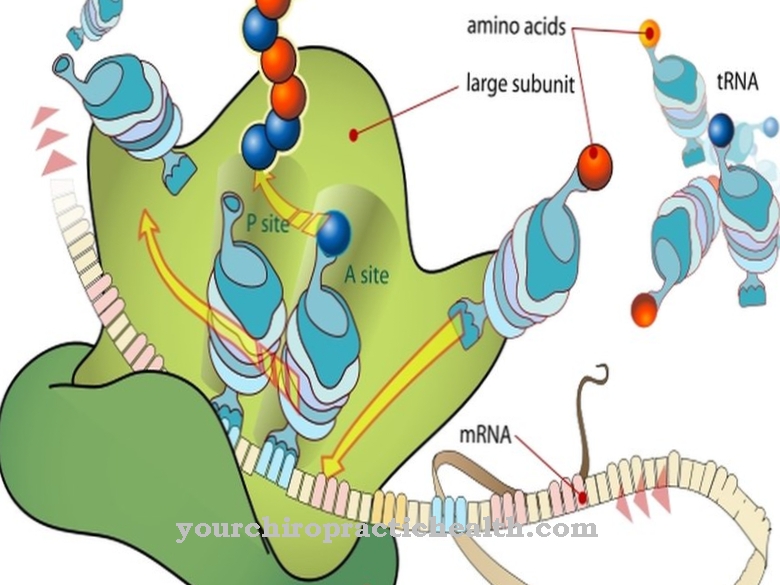The Pulmonary valve regulates the flow of blood from the heart to the lungs. Illnesses can significantly impair performance.
What is the pulmonary valve?
The term pulmonal comes from the Latin term pulmo for the lungs. Accordingly, the pulmonary valve is the one that regulates the flow of deoxygenated blood to the lungs. It is located at the transition between the right heart chamber (ventricle) and the pulmonary artery (pulmonary trunk). There are a total of 4 heart valves, 2 leaflet valves between the atrium and the heart chambers and two pocket valves between the heart chambers and the vessels leading away from the heart.
The pulmonary valve has 3 crescent-shaped pockets, a right, a left and a front, which are arranged so that they only allow blood to flow in the direction of the lungs, in the other direction they close the opening to the heart. The oxygen-poor blood that meets the pulmonary valve in the right ventricle of the heart arrives there via the two vena cava and the right atrium. On the way into the chamber it passes the sail flap, which is located at the transition. The passage of blood through the heart valves is controlled by the changing pressure conditions during the heart rhythm.
Anatomy & structure
The three pockets of the pulmonary valve arise from the inner layer of the pulmonary trunk at the transition to the right ventricle, the so-called tunica intima. They have a crescent-shaped (semilunar) shape with an inward bulge that can initially catch the blood flowing back. At the free tips there are nodular thickenings with a surrounding membrane, which come into contact with each other when closed.
In contrast to the sail flaps, the pocket flaps do not have any muscles that control opening and closing. Their opening and closing mechanism is regulated exclusively by the direction of the blood flow and the pressure conditions. Although the pulmonary valve is identical to the aortic valve, it is smaller and thinner due to the lower pressure in the right ventricle and the lower mechanical stress. All 4 heart valves are embedded in a tough connective tissue layer called the heart skeleton. This forms the so-called valve level, which is shifted by the change in shape of the heart during breathing and thus supports the suction-pressure mechanism of the heart.
Function & tasks
The main function of the pulmonary valve is to regulate the direction of flow of the oxygen-poor blood on its way to the lungs. It ensures that blood from the right ventricle gets into the pulmonary artery but does not return. The driving force for the opening and closing mechanism is the pressure ratio. If the pressure in the right ventricle exceeds that in the vessel, the valve opens and the blood is expelled towards the lungs. If the pressure conditions are reversed, the 3 pockets are automatically closed by the blood flowing back.
This mechanism is rhythmic and takes place in two phases, called diastole and systole, which run parallel in the right and left halves of the heart. First of all, all valves are closed and the heart muscles are relaxed. On the right side of the heart, the oxygen-poor blood flows from the body's circulation into the right atrium until the pressure there is greater than in the right ventricle. The leaflet valve opens and, following the pressure gradient, the blood flows into the right ventricle.
When this has reached a certain filling volume, the leaflet valves are closed and the pulmonary valve is still closed. This is followed by the tension phase of the myocardium of the right ventricle. The contraction increases the pressure on the blood located there. If this exceeds that in the pulmonary artery, the pulmonary valve is opened and the blood expelled towards the lungs. The cycle ends when the three pockets are closed again by the blood flowing back.
You can find your medication here
➔ Medicines for cardiac arrhythmiasDiseases
Functional disorders with an impact on the blood flow can basically arise from 2 types of impairment. Either through a narrowing of the flow opening, called a stenosis, or through insufficient closure of the three pockets, an insufficiency. The causes of these heart valve defects can be different.
In rare cases, pulmonary valve insufficiency can result from pathological changes in the valve tissue, for example as a result of inflammation of the inner layer of the heart (endocarditis). The more common cause is increased blood pressure, which is caused by the back pressure that occurs with certain lung diseases. The pulmonary artery is widened by the increased pressure in the vessel and the distance between the pockets increases. You can no longer completely close the vessel lumen.
This mechanism causes blood to flow back into the right ventricle with each cycle, reducing ejection volume. The heart tries to compensate for this deficit by increasing muscle activity. If sufficient compensation is no longer possible, right heart failure develops. Similar mechanisms occur in pulmonary stenosis, even if the causative mechanism is different. This narrowing of the pulmonary valve, which reduces the amount of blood that is pumped into the pulmonary artery during the expulsion phase, is mostly congenital.
Here, too, the heart tries to compensate for the lack of ejection volume by increasing the pumping capacity, with the same consequences as in the case of insufficiency. Depending on the size of the impairment, typical symptoms of varying intensity can occur. The underperformance of the heart means that not enough blood reaches the lungs and is enriched with oxygen. Blue discolouration (cyanosis) occurs in certain areas of the skin, shortness of breath at rest or during exercise, and performance is reduced. In the case of pulmonary insufficiency, complications can also arise due to the reduced flow rate. Blood clots can form on the valve which, if detached, lead to a pulmonary embolism.
Pulmonary atresia is a congenital malformation in which the valve either does not open or does not exist. This disease can have serious consequences and make it necessary to have an operation immediately after birth to restore the body's circulation.




























.jpg)